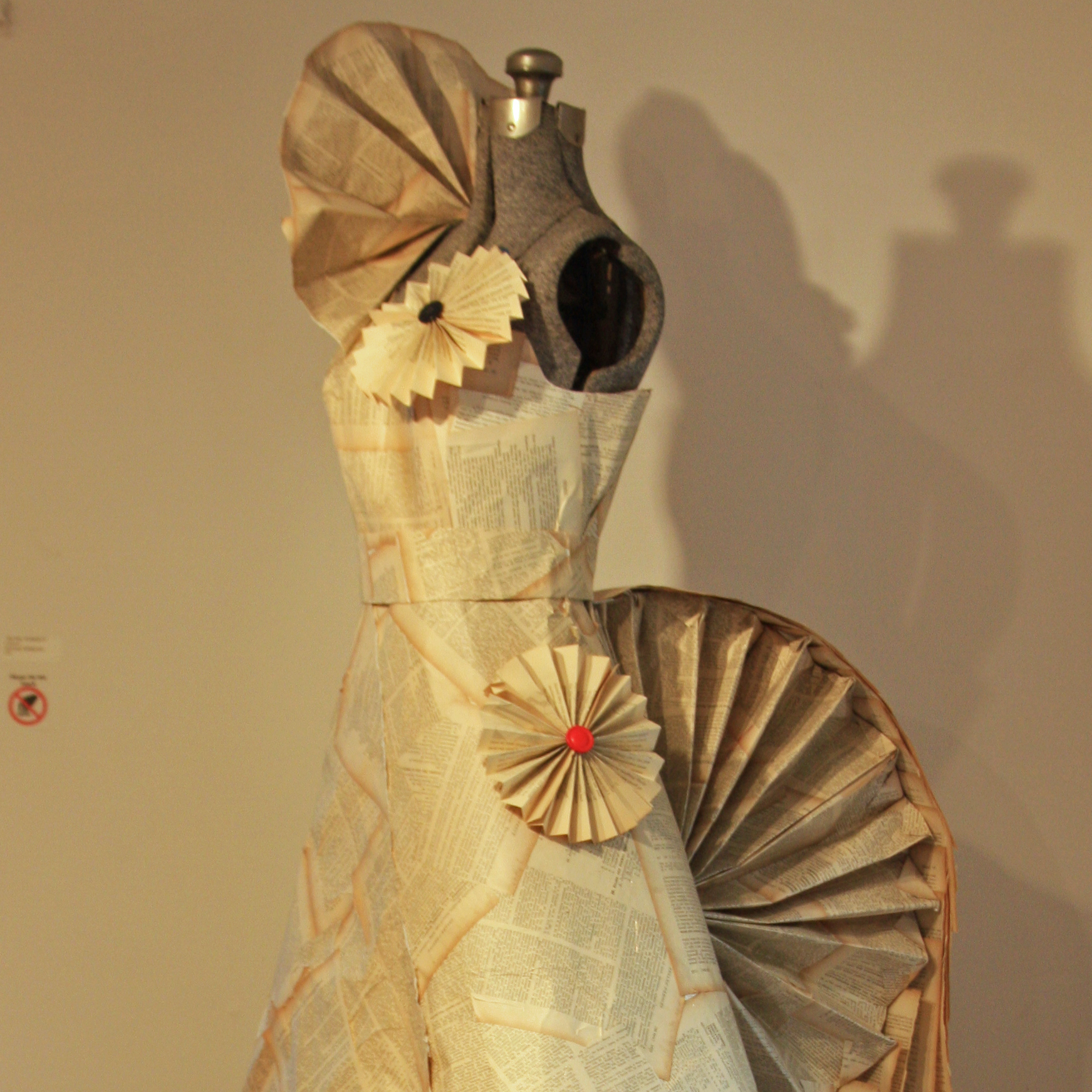
Artists turn their ingenuity to an object that is a bridge to both ancient and future generations, and a source of power and influence beyond any other human device.
This piece originally appeared in The Vermont Standard.
When Artistree Gallery Director Adrian Tans issued his latest call out, he asked artists to turn their ingenuity to an object that is at once physical and abstract; something that is both common and complex, a bridge to ancient and future generations, and a source of power and influence beyond any other human device. What he wanted was for creative minds to examine the concept of the book, to probe the fertile ground of what amounts to embodied declaration.
“We didn’t know what to expect,” says Tans of his solicitations to guilds, foundations, and folk art societies across New England and New York. What came back was a multifarious array of extraordinary pieces; forty are on display through August as part of the Gallery’s current Unbound exhibit.
The show is the fledgling nonprofit’s ninth in ten months.
“We’ve definitely created more awareness of local artists,” says Tayo Skarrow, one of the group’s Directors, “that is a main part of our mission.”
While Woodstock village has a number of galleries, Artistree’s approach differs; its shorter shows allow more artists a venue to display work. “We are not as retail-based, but we still sell, that’s part of the goal as well,” Skarrow adds.
Noted curator, instructor, and visual book artist Deborah Davidson of the Art Institute of Boston at Lesley University juried the Unbound exhibit. Davidson, who has been thinking about and working with books as art for twenty years, credits the robust response to the show’s call for artists to an renewed interest in physical books, a sort of counter to the trend that’s been taking them off shelves in favor of digital readers. “Artists need to make things by hand,” she says, “and viewers need to hold things, it’s part of being human.”
The show’s diverse pieces include a glowing and golden architectural multi-book structure, a folio of delicately cut, snowy-white pop-ups, and a reading chair fashioned from pre-teen adventure volumes. From among the many entries, Davidson chose works created around compelling ideas, with content that peaked her interest. But it was materials and other physical aspects, and most particularly how they supported a core concept, that spoke to her artist’s instinct. Content and form should be married together she says. The drenching whitewash of one piece, for example, enhances its stark theme; the immense pages of another, an oversized book, magnifies its poignancy.
Davidson chose Anna Christman Horvath’s En-tangled as the show’s first place prize winner. The Hanover artist’s self-described “photo album” traces the course of a noxious relationship in a series of thread-embedded pages pressed with textured monoprints. “I really loved the thread and the sewing, how it set up an incredible sort of sequence and rhythm,” says Davidson, “although there is no text, it referenced a book with text in a really beautiful way.”
The work of a number of local artists also satisfied Davidson’s appetite for “extraordinary use of ordinary materials to say something in an unexpected way.” Woodstock’s Lina Tans used pages from a decades old law book to fashion her entry, Courtesan. Viewers who closely examine the gentle drape of the full-sized gown may glean bits and pieces about long-discarded methods for dealing with people deemed insane. For Tans, who studied print-making, dance, and early childhood at Bennington College, the piece brings together an eclectic affection for old dress forms, which she collects, and the yellowed, musty pages of discarded volumes. Her taste, she says, tends towards the quirky.
“Some people might have flower arrangements on their tables,” she laughs, “we have old typewriters with odd little buttons.”
To construct her entry, Tans yielded to the dictates of her chosen material. An initial plan to sew the pages had to be scrapped. Even adhering them to a whisper-thin underlining was a challenge; some pages disintegrated in her hands as she worked, and their inherent stiffness made projecting a flowing garment’s ease and movement difficult. The end product, she hopes, the result of her intuition as well as trial and error, shows the elegance of an every day item.
John Bieling chose malleable metal as the vehicle for his communiqué. The Sanskrit symbols hammered into the copper cylinder of his Tibetan Prayer Wheel are the syllables of a sacred Buddhist mantra that translates as ‘hail to the jewel in the heart of the lotus.’
“it’s a high functional piece of art,” he says of the wheel, “you spin it clockwise and that permeates the area around it; mantras go out to all sentient beings.”
The artist creates a variety of sculptural pieces in his Reading studio. The prayer wheel’s inception was a piece of wood, a slab into which Bieling hand carved characters. He used an assortment of tools to hammer the pattern of that negative plaque into a sheet of copper. An iron anvil, once used to construct stove pipes, provided the form for the exacting job of creating an undistorted cylinder from the initially flat relief. Bieling also fabricated a fixed bottom and removable lid for the wheel, so that other mantras may be stored inside. At the Gallery, the wheel hangs from a cantilever mounted on the wall, ball bearings in the shaft that run through the piece’s center have it spinning easily, and long. “I hope it [prompts] people to want to know a little bit more about Tibet, and Buddhism,” Bieling says, “and creates an interest in seeking some kind of satisfaction in life.”
Unbound is Artistree’s first collaboration with another Woodstock nonprofit, the Pentangle Arts Council, which in recent years has focused on performing arts. Going forward, the two groups hope to work together on other visual arts ventures.
